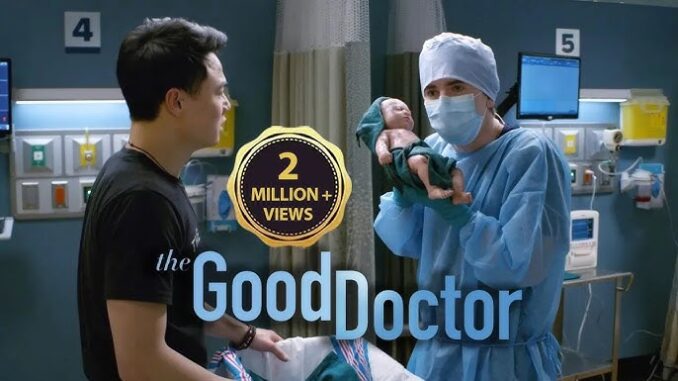
Dr. Shaun Murphy’s most defining trait is his autism and savant syndrome, allowing him to recall vast amounts of information instantly and visualize anatomy in 3D. So, is this real?
Yes — savant syndrome is real, though extremely rare. Only an estimated 50 to 75 individuals worldwide are known as “prodigious savants,” meaning their abilities would be remarkable even without any disability.
In medicine, though, there has never been a confirmed case of someone with savant syndrome becoming a licensed surgeon — primarily due to the communication demands and unpredictability of surgery.
Still, The Good Doctor deserves credit for raising awareness and respect for neurodivergence, even if Shaun’s abilities are dramatized for storytelling.
Emergency Room Dramatics: Real Tension, Exaggerated Timelines
One of the show’s biggest draws is its high-stakes emergency scenes. From rare tumors to explosive aneurysms, every episode features a condition that challenges the team.
Medical consultants have noted that many of the diagnoses and conditions are real. Episodes often draw from obscure but medically documented cases, and writers consult real doctors before finalizing scripts.
However, the speed of diagnosis and treatment is often exaggerated. In real life, a single surgery might take several hours, or a rare condition might require days of testing, not mere minutes and a dramatic stare into space.
Let’s be honest — if real hospitals worked as fast as St. Bonaventure, the ER backlog would be a thing of the past.
Surgical Procedures: Surprisingly Accurate
While the drama is dialed up, The Good Doctor is often commendably accurate in its surgical techniques. The show uses a team of medical consultants, including actual surgeons, to ensure correct terminology, tool usage, and even hand placement during procedures. Freddie Highmore reportedly spent hours with surgeons and medical advisors to master movements — like suturing, making incisions, or palpating organs — so they looked convincing. He even learned how to hold instruments correctly, a detail some medical dramas overlook. Of course, real surgeons rarely talk that much during surgery — and they certainly don’t pause mid-surgery for philosophical debates.
Hospital Politics and Hierarchy: Fiction with a Hint of Truth
Dr. Glassman pulls strings to get Shaun hired. Hospital board members argue over one resident. A junior doctor calls out a senior surgeon in the OR. Real-life doctors have weighed in: most of these scenarios are possible but unlikely. Hospitals are structured around strict hierarchies, patient safety regulations, and legal risks. It would be highly unusual for someone like Shaun — with communication challenges — to be hired without extensive screening and team consultation. However, it’s not impossible. Some real hospitals do make exceptions and adjustments for neurodivergent professionals, just not as swiftly as seen on screen. Also, real-life hospital politics are more bureaucratic and less dramatic, but the show gets points for addressing issues like burnout, administrative interference, and moral dilemmas — which absolutely do exist.
Doctor-Patient Relationships: Emotionally Resonant and Mostly Realistic
One of the show’s strongest elements is its emotional connection between doctors and patients. Shaun may not communicate like other doctors, but his raw honesty and empathy often touch patients in profound ways. This aspect is surprisingly close to real life. While many doctors are overburdened with paperwork and tight schedules, empathy and compassion are still cornerstones of good medicine. Doctors have shared that Shaun’s straightforward manner — though socially unorthodox — often mirrors how some neurodivergent individuals connect with patients: by cutting through emotional noise and getting to the core truth. Episodes dealing with end-of-life decisions, organ donation, and medical ethics are particularly well-handled and have been praised by healthcare professionals for their thoughtfulness.
TV Magic vs. Medical Reality: What We Forgive for a Great Story
Let’s face it: television isn’t a classroom — it’s entertainment. And The Good Doctor doesn’t pretend to be a documentary. Like any show, it compresses time, heightens drama, and adds visual flair to keep viewers glued to the screen. But where it stands out is in its respect for the medical profession. Unlike some series that reduce doctors to walking egos or romantic clichés, The Good Doctor attempts to portray surgeons as real people: flawed, brilliant, exhausted, passionate. And in doing so, it inspires real students, nurses, and med-school hopefuls every day.
Final Diagnosis: 70% Accurate, 100% Impactful
So, can Dr. Shaun Murphy actually save your life? Probably not — at least not in five minutes with one glance. But what The Good Doctor can do is shift perspectives, inspire compassion, and ignite conversations about what it means to care, to connect, and to never underestimate someone just because they’re different.
